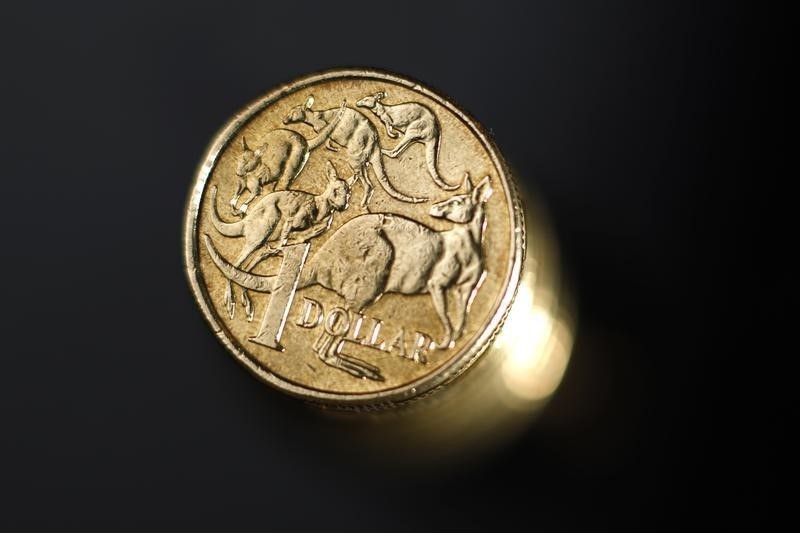By Cecile Lefort and Naomi Tajitsu
SYDNEY/WELLINGTON, Sept 7 (Reuters) - The Australian dollar plumbed 6-1/2-year lows on Monday on global growth concerns, while its New Zealand counterpart struggled for traction.
The Australian dollar fell as far as $0.6892, its lowest since 2009, and hit a three-year trough of 81.85 yen.
It later regained some ground, albeit modestly, at $0.6939 and 82.61 yen after a local private survey showed job ads bounced in August.
Also helping was a firm start on the Shanghai stock index .SSEC following a four-day national holiday.
Technicals, however, point south for the Aussie with speculators extremely short the local currency on expectations the Federal Reserve will hike rates as early as next week.
"With the commodity outlook still negative and China economic woes front and centre it's a struggle to come up with any forward positive outlook for the Aussie," said Stephen Innes, a senior trader at FX/CFD firm OANDA Australia and Asia Pacific.
Investors have been aggressive sellers of the Aussie in recent weeks, in large part due to heightened concerns about a hard landing for the Chinese economy. China is Australia's top export market.
The Aussie took the honours of the worst-performing major currency last week with a 3.7 percent drop. Major support was found around $0.6850-70.
The New Zealand dollar NZD=D4 struggled to find friends at $0.6279, having skidded nearly 3 percent last week, holding near a two-week low of $0.6270.
Against the yen, it slumped as low as 74.41 yen, its weakest since Aug. 24, taking the kiwi's trade-weighted index =NZD to 68.62, approaching 68.46 hit last week, its lowest since May 2012.
"The kiwi is caught between whether the Fed will raise rates this month, and the turmoil in emerging markets," said Tim Kelleher, head of institutional FX sales at ASB bank in Auckland, adding that the kiwi may fall towards $0.6000 in the coming weeks if markets remained volatile.
Market participants also braced for a monetary policy announcement by the Reserve Bank of New Zealand later this week.
With a 25 basis point cut to official rates priced into the market CSSY , investors were awaiting the RBNZ's quarterly policy statement to see more cuts would be in store before year-end, given weak dairy prices and slowing growth in China, a major buyer of New Zealand commodities.
New Zealand government bonds edged up, nudging yields on most bonds 1 basis point lower.
Australian government bond futures fell, with the three-year bond contract off 3 ticks at 98.230. The 10-year contract was down 1.5 ticks to 97.3300.
